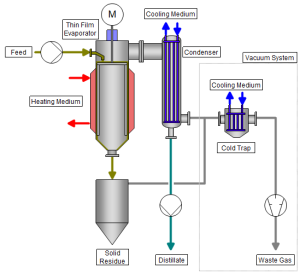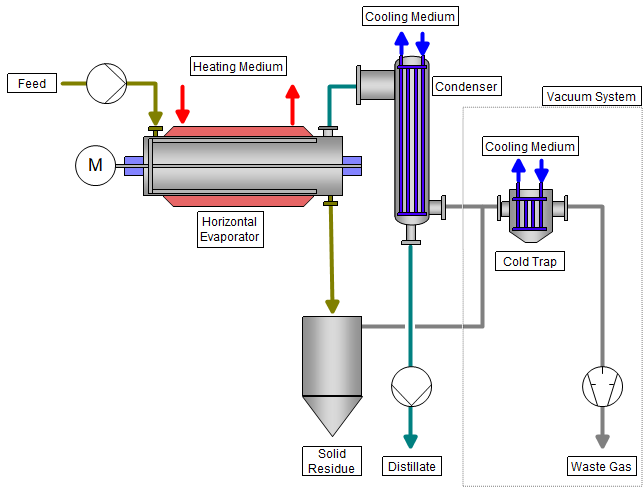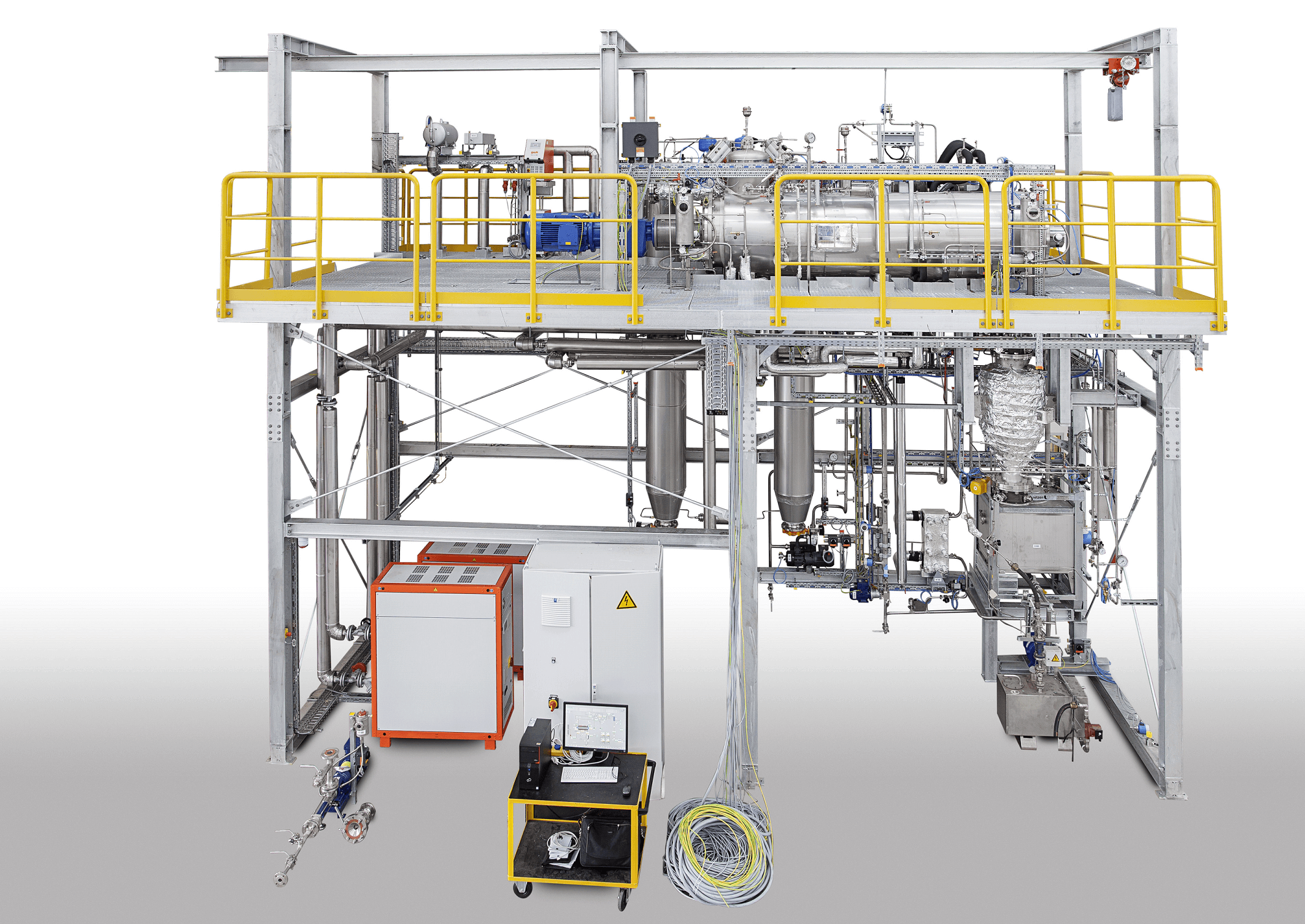Working principle of thin film dryers
A thin film dryer is a contact dryer where the heat is transferred from the cylindrical heating jacket into the product, while a rotor with special wiper elements increases the heat and mass transfer to finally obtain a dry and flowable solid.
The turbulence generated means that higher outputs can be achieved with shorter dwell times than in conventional drying systems.
Depending on the drying task and consistency of the product treated in the thin film dryer, vertical or horizontal arrangements are selected.






